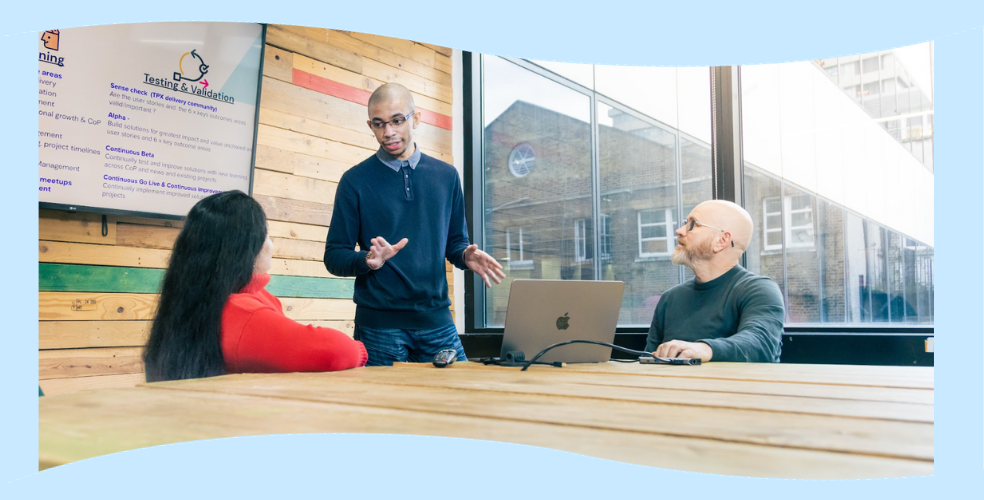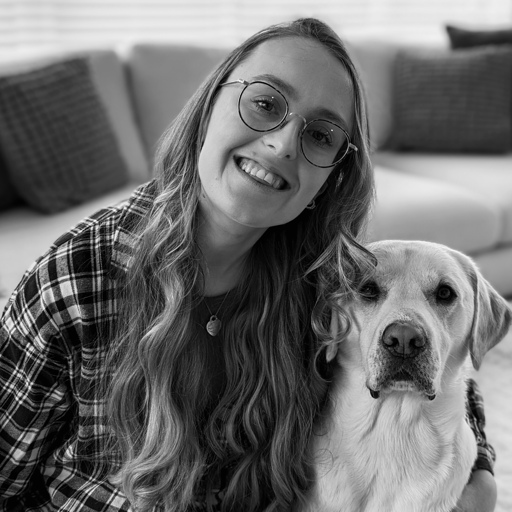A big part of our work with organisations is building capability together, putting in place and supporting new ways of working. It’s always our goal to set up teams for future success, ensuring that the people we work with become more confident in new ways of working, such as user research.
The way we approach this reminds me of a quote from a much loved childhood film:
"When you need me but do not want me, then I must stay. When you want me but no longer need me, then I have to go."Nanny McPhee
In this blog post, I’m going to share approaches we’ve taken to supporting and embedding research approaches. These examples come from work Dani Allen (Lead Content Designer) and I have done in some of the larger organisations we’ve worked with.
All these approaches are intended to operationalise and embed research in ways that are sustainable for the organisations we work with once we’ve left. They’re intended to ensure that teams continue to use and share research in joined up ways, ensuring continuous learning can be scaled and supported.
Joining up research communities and activities
The first area to consider is how to make sure research practices are effectively connected across an organisation. We’ve helped clients set up communities of practice for research. Working with teams to set up regular meetings and creating protected time is one of the most important things we can do to join research communities together. When work is challenging, opening up communication allows us to support each other to do what’s needed. Adding structure and sharing across a community can boost morale and gives us the space to discuss shared challenges.
I’ve seen first hand how the delivery pace – and typical model of one researcher per service team – can leave little time to join up research activity across different teams or programme areas in an organisation. Yet often, the research participants or journeys these areas are looking at will overlap. This means we sometimes waste time on duplicating recruitment, and miss opportunities to gain an end to end view.
By using regular check-ins, spreadsheets or Trello boards to capture upcoming research needs, researchers across different projects can identify overlaps in users, timings and journeys to align research plans. This can mean recruiting participants together or – even better – running research together, leading to better research outcomes with little extra time or admin.
Investing in research participant panels
Having a go-to list of consenting participants is a life saver in speedy participant recruitment. Taking the time to develop a research panel can feel impossible, but it’s essential – to avoid the same small number of participants taking part in multiple research sessions.
Often, we’ve uncovered teams who aren’t part of the digital arm of an organisation but can support us in our participant outreach. Using engagement groups, forums, newsletters and social media are all great ways to recruit participants.
Reflecting back on how participants join the panel is also a key step in success. Spending time with content designers gives me confidence that there are no barriers to participants – because the content in the journeys they go through to sign up for and take part in research is clear and easy to understand.
Simplifying participant consent and data management
Inefficient processes can cause inconsistencies in handling participant consent and data, and team changes can increase the problem – research data becomes hard to find In extreme cases, this can become a GDPR risk.
Reviewing and iterating protocols and creating clear structures is crucial – as is understanding if tools to further support the process can be used, such as Consent Kit.
Collating research insights
Burying insights in Miro boards and slide decks means research findings can sometimes be difficult to understand, or get lost when team members move on. Structured insight libraries are a great way of bringing together and identifying a set of common tasks in user journeys, creating themes to synthesise around.
You can then tag each insight to:
-
relevant user types
-
what projects they've been identified in
-
key quotes from users
-
confidence ratings
-
links to reports or research data
This insight log not only becomes a place where new knowledge can be easily added but also a space for:
-
new team members to find out about past work
-
product managers to identify unactioned insights that can inform future roadmap items
-
scoping new research based on knowledge gaps or low confidence insights to centre hypotheses around
…Then I have to go
One of the most exciting parts of our work is seeing organisations grow and succeed as they become more confident, and equipped to embed research approaches across all their work. I love to see how organisations continue to thrive and grow with the types of investments described here.
I’m looking to develop and expand on these approaches as part of future work. If you're working in similar circumstances and would like to share experiences, get in touch: emma.sutcliffe@tpximpact.com

Being on the inside of the design research bubble
Practical tips and advice for teams who want to get closer to their research insights
Read moreOur recent design blog posts
Transformation is for everyone. We love sharing our thoughts, approaches, learning and research all gained from the work we do.

Lessons learned from joining projects in progress
We share tips for joining a project where there’s already an established design team in place.
Read more
Find out all about what our Design team has been up to over the past few months.
Read more

